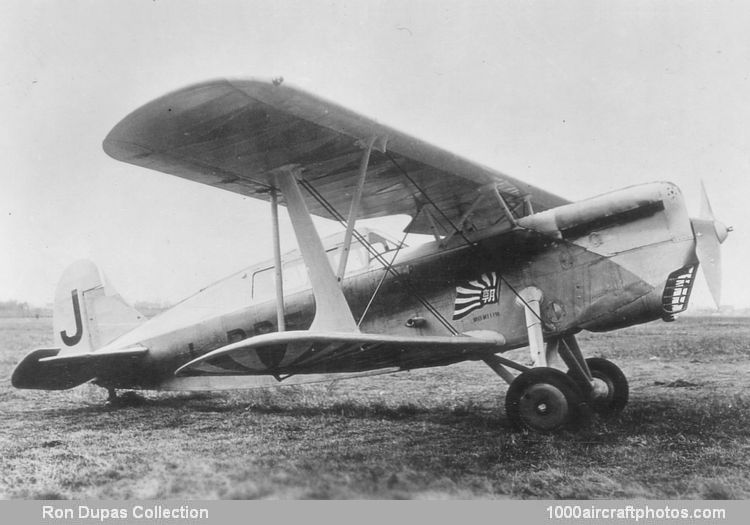03/15/2020. Remarks by Johan Visschedijk: "In November 1930, Kawasaki undertook the design of a highspeed reconnaissance aircraft based on the experience gained with the KDA-5, just accepted as the Army Type 92 Fighter, and expected to secure Army interest in the project. This new aircraft, the KDA-6, was to have improved performance, range and maneuverability, equal to two-seat fighters being developed at that time by the western powers. (The letters KDA stood for Kawasaki Dockyard Army-type.)
Designed by Dr. Richard Vogt of Germany, assisted by Takeo Doi (the later chief designer of Kawasaki), the aircraft was of all-metal construction with partially duralumin skin and partially fabric covering, the two crew sat in open cockpits. Armament would consisted of two fuselage-mounted forward-firing 0.303 in (7.7 mm) machine guns and a dorsal flexible 0.303 in (7.7 mm) machine gun.
The design was ready in February 1931, after which tooling was started, production of the prototype began in August, which was finished in October 1931. Flight tests began immediately at Kakamigahara Airfield (presently Gifu JASDF base), with the success expected. It was then flown to Tachikawa Airfield and evaluated there by the Army under the designation Improved Type 88 Reconnaissance Aircraft, referring to Kawasaki's KDA-2.
The Army found this aircraft to have very satisfactory performance, but a decision had previously been made that the Army would decide its needs and then assign certain manufacturers to produce specific types. Therefore, under this ruling, Kawasaki had no market for this military aircraft, but, when the company was awarded a contract to develop the Army Type 93 Single-engine Light Bomber beginning in September 1932, the KDA-6 became the basis for the design that became the Ki-3.
In the meantime, the sole prototype KDA-6 was sold to Asahi Shimbun and used as a news communications aircraft. When a landing accident prompted extensive structural repairs, modifications were made at the same time to make it a long-range liaison aircraft. Changes included replacement of the 450 hp BMW VI with a 600 hp BMW VIII (both types were license-built twelve-cylinder liquid-cooled V-engines, driving two-bladed wooden propellers), the open cockpit was given a canopy, a cargo compartment was added, and fuel capacity was increased to 287 gal (1,085 l). To compensate for this increase in weight, a stronger landing gear was fitted, and the tail unit was entirely redesigned. With completion of these modifications, the aircraft was redesignated Kawasaki A-6. It made its first flight at Kakamigahara in late August 1934, then was delivered to Asahi as Asahi No. 111.
As part of the tenth Anniversary Flight Program to commemorate the first Visiting Europe Flight, the aircraft was used for the Visiting North China Liaison Flight between Osaka and Peking (presently Beijing). Flown by Masaaki Iinuma and flight engineer Kiyoshi Shimazaki, it left Osaka on September 6, 1934, and flew the 1,231 m (l,981 m) in 9 hr 47 min, making one stop at Seoul, Korea. Actual flying time was 8 hr 26 min. Following this notable flight, the aircraft remained active with Asahi Shimbun as a high-speed communications aircraft and to transport newspapers."
